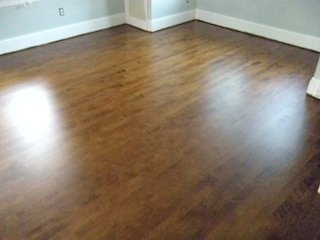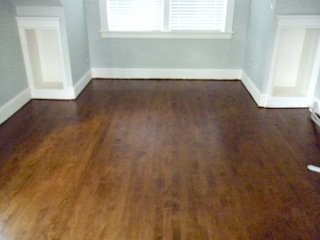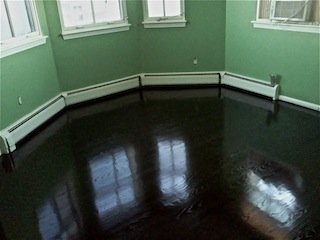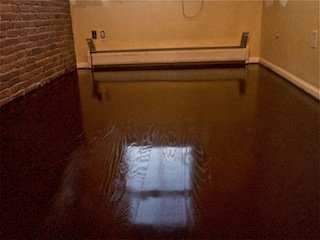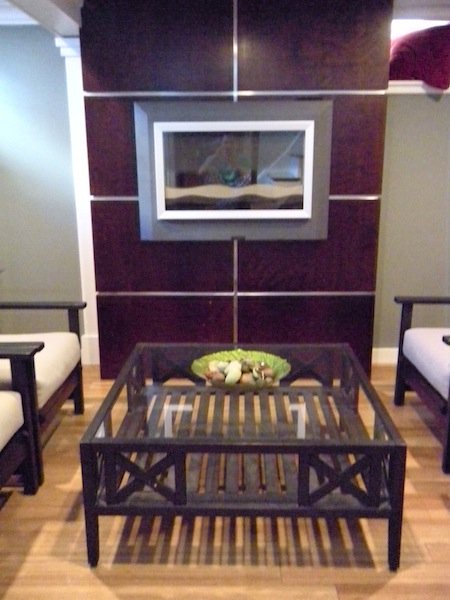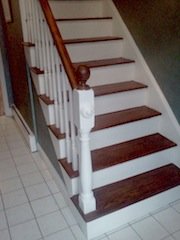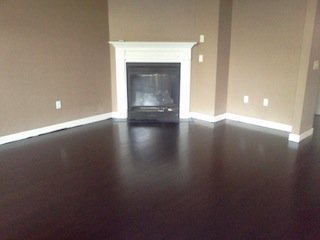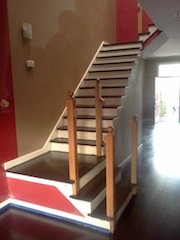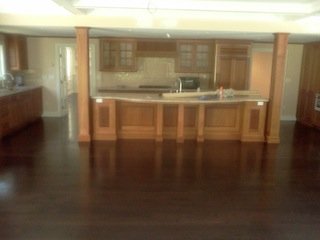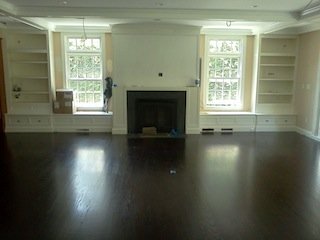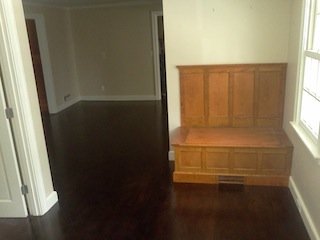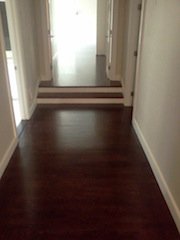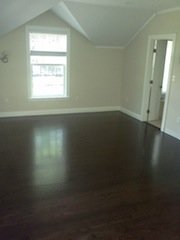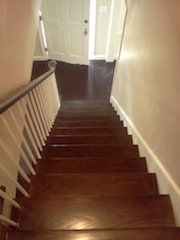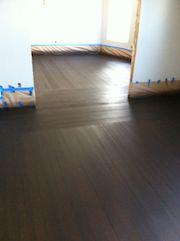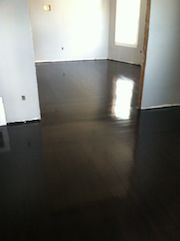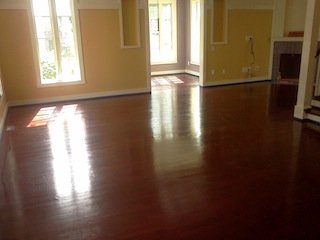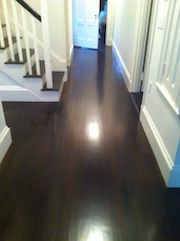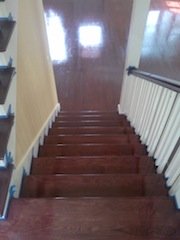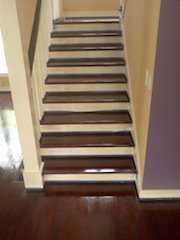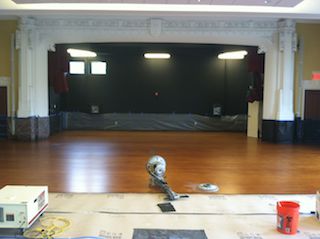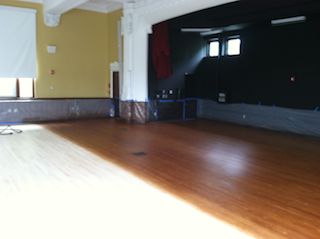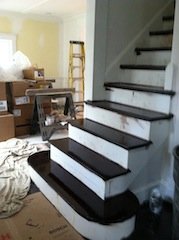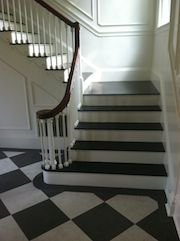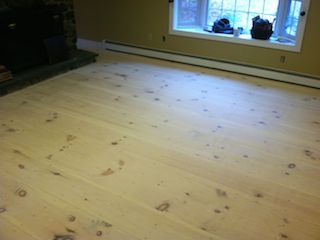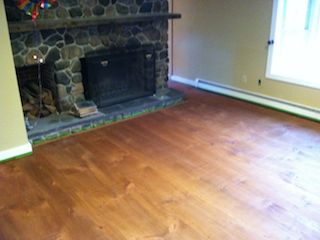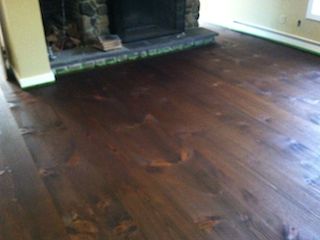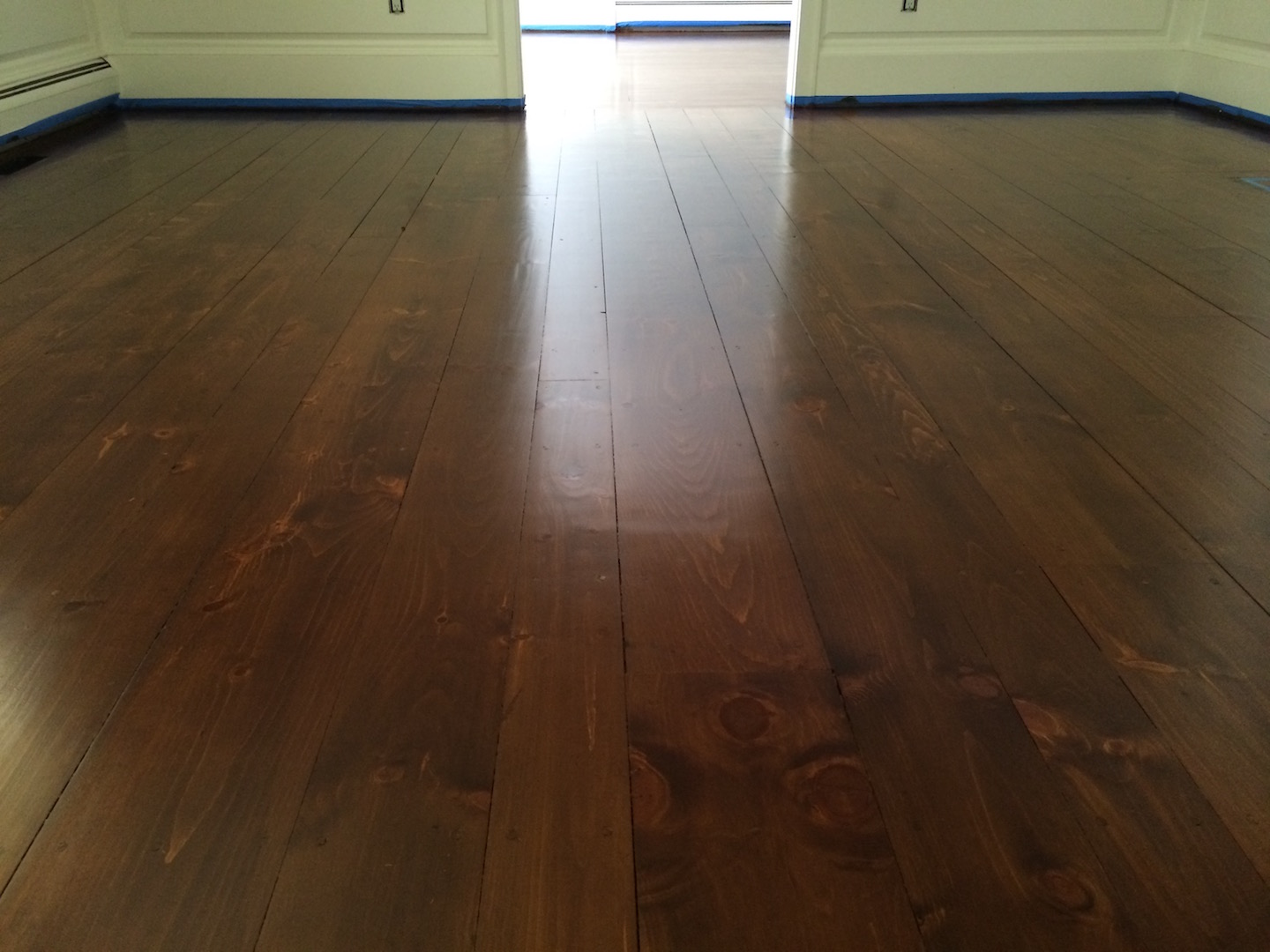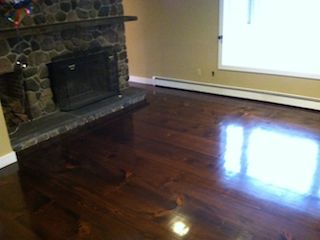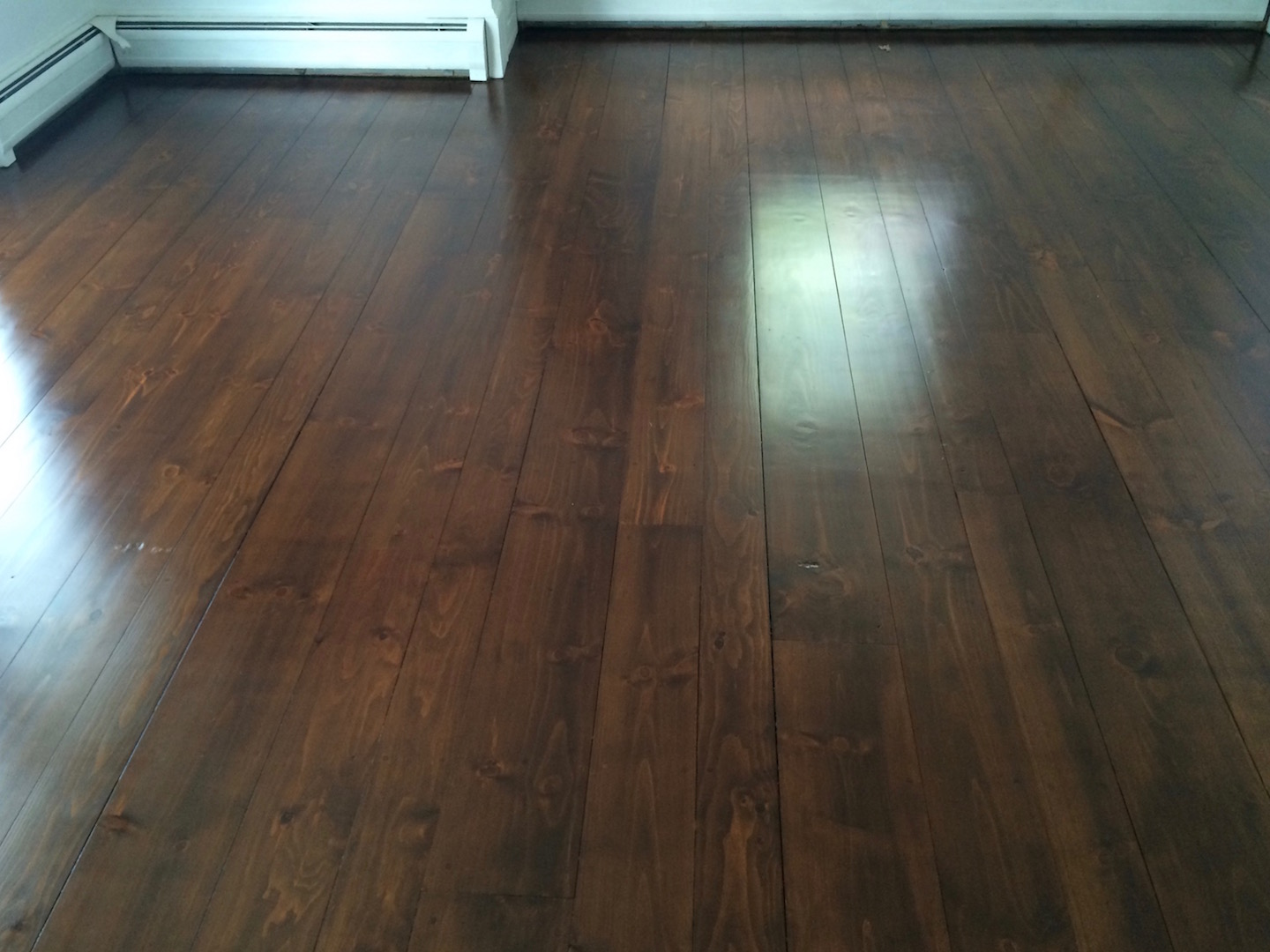Wood Dye - What you should know
Aniline Wood Dye Stains - If, you are looking for a unique, custom, vibrant, dense color. Aniline wood dye is the colorant you are looking for.
Aniline dyes are made from aniline oils and tar. Wood dyes are tiny pigments that penetrate deep into the wood. Which creates a more even distribution of color, especially in blotch wood species like Maple and Pine. Aniline dyes are available in liquid and powder form. Wood dyes are soluble in water, denatured alcohol and oil. The most widely available is ready to use water soluble. A "No mixing" required wood dye, use it right out of the can. It's my personal preference, getting the same color when you need a large batch. Aniline dye is light fastening, which means it fades over time when exposed to light. Most professionals will apply an oil base stain over the dye to prevent this issue. Dyes can be sprayed, brushed or ragged on for application methods
Aniline wood dye can be used in a numerous ways of staining process. Aside from the ready-to-use standard colors, you can mix them for a more custom color, The possibilities is endless.
Applying aniline dyes can be tricky, especially for a novice. Applying aniline dyes on a piece of wood is nothing compared to an entire floor. Applying dyes to a small piece of wood, requires no special skill or awareness. The chance of you making a blotch staining job is slim. But, when you are applying aniline to an entire flooring. If, you fail, the profanity and frustration is unbearable. If, you succeed, your DIY confidence level will be sky high.
Aniline dye staining techniques
As mentioned earlier, aniline dyes can be used in many staining process. A process is determined by your decor goals. Below is a list.
- Straight up - use aniline dye straight out of the can or mix your own and apply a compatible top coat. Don't forget , the color can fade over time.
- Stain layering - Want to add depth to the traditional wood stain colors? Use aniline wood dye as a base layer. Using a medium to dark base color will darken any traditional oil stain. This will also, help prevent light fastening.
- Toner coat - Looking to cut down on your staining process. For a custom unique colorant, add aniline dye to a single component water base finish. And apply it directly to your project. Warning, toner coats can be tricky to apply, especially with a dye in it. Lap marks and too dense of a color can occur. Always make a sample piece first.
- Ceruse finish - Love those aging grain popping affect? Use aniline dyes as a base color and then apply a hard wax oil or penetrating oil finish for an aging affect.
- Ultimate Ceruse finish - Need to create a unique look? Use as many different color dyes as you desire, bleach, add reactive stain, add a stain, add a film forming finish or penetrating oil finish for the most custom look possible. The possibilities is really endless.
Dye solubles - what you should know
Aniline dye solubles, what you should know. Dyes can be soluble in water and alcohol.
- De-natured Alcohol solvents tend to have a strong odor, harsh fumes and is highly flammable. Use extreme caution, when using dye in an alcohol solution. Keep it away from open flames, pilot lights should be turned off and the room should be well ventiliated. A full face respirator and nitrile latex gloves should be worn during application. This solution minimizes grain raise. You can add 50% of water to this mix to cut down on the fumes.
- Water solubles are the most commonly used. It creates no major harm compared to alcohol. The problems it create is excessive grain raise and is very fast drying. Making it tricky to apply and difficult to avoid lap marks if, done incorrectly. Some professionals will tape off along a joint line and stain in sections.
How to apply, Aniline Dye Stains
There are four methods on how to apply aniline dye stains. Prep your area for staining, a double layer of tape should be used along baseboards and trim. Dyes tend to soak right through tape. Mask off walls using 12-18" masking paper to prevent splashes or overspray from hitting your walls or cabinets. Using a moisture, measure the moisture content and make note of it. This will also help determine when the dye is dried. Afterwards, use one of the following methods to apply your aniline dye.
- Spray - Use a HVLP air assist spray system to apply a dye stain. Keep the air pressure as low as possible to prevent overspray and mist the color on the floor. Two to three coats maybe needed to achieve desired color. Mask off all surfaces a minimum of 18" from the floor.
- Rag on - Apply by using the rag on method. Apply a generous amount of dye, keep the surface wet and the color even. Move fast and don't allow the working area to dry out. Otherwise, unwanted lap marks will occur.
- Water base pad applicator - Same as rag on method. Apply a generous amount of dye and keep the surface wet. to avoid lap lines and brush marks.
- Spray and equalize - My preferred method. Using a garden sprayer and a tool called WischWiesel, which looks like a T-bar. Have one person spray the dye onto the floor and a second person equalize or even out the dye by dragging the WischWiesel tool from wall to wall. Feather out the edges and keep the working area wet.
- Drying - Allow dye to dry to the original moisture reading prior to application
Note: Dye application can cause excessive grain raise. You can water pop the floor and then screen with 120 grit prior to applying your dye. This will help minimize grain raise.
****Always wear latex gloves when handling aniline dyes.****
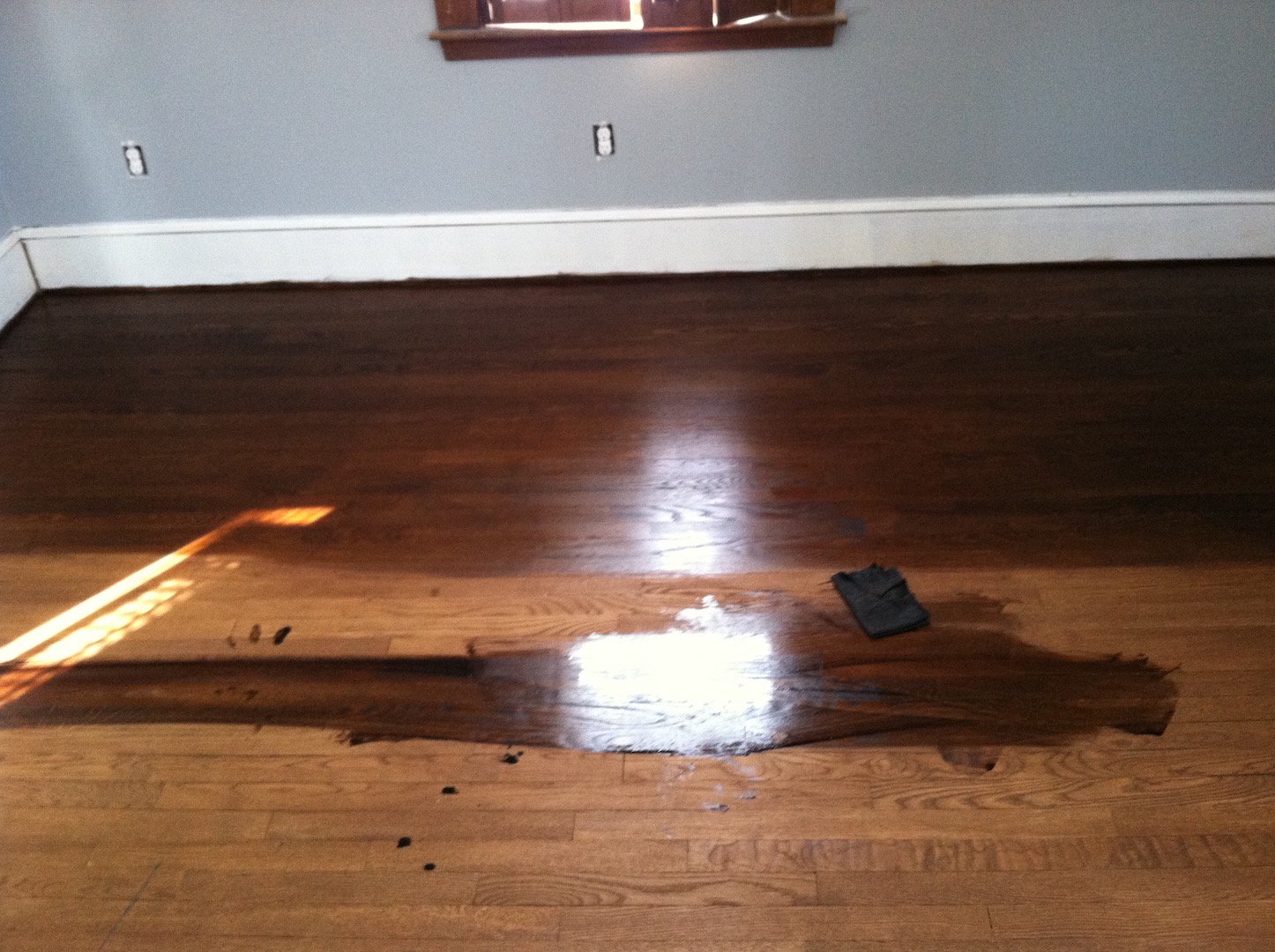 Stain layering with aniline dye and oil base wood stain
Stain layering with aniline dye and oil base wood stainTop coating
You can top coat aniline dye stains with any type of wood floor finish, except for water base floor finish and lacquer sealers. These wood floor finishes will reactivate the dye and move it around. The only way to apply these finishes without causing the stain to move is to spray the finish on.
Clean Up
Accidents happens, Luckily clean up is easy. Just take care of it right away.
- Water - Simply just cleaning with water. Water dilutes the dye, use enough of it and it will disappear.
- Bleach - Laundry bleach is designed to remove aniline dyes in clothes. Use bleach for dried up dyes.
Aniline wood dye: Apply with a rag
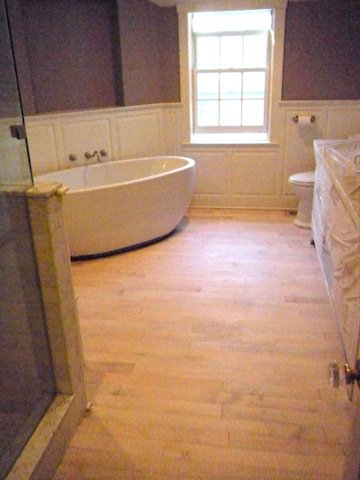
On this hardwood flooring project. We installed new Maple hardwood flooring. The floor was then sanded, vacuumed and tacked.
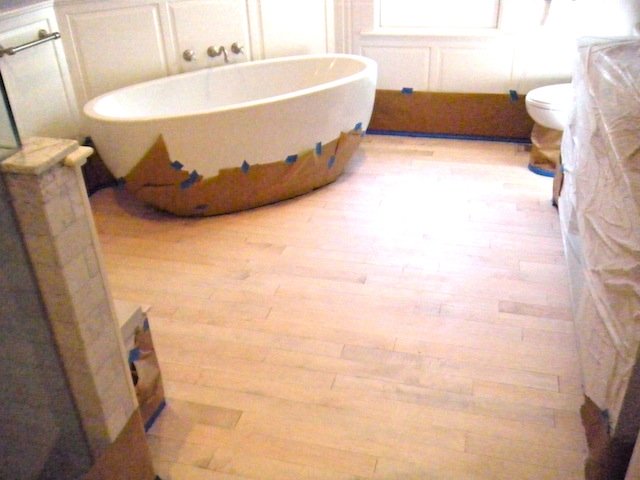
We masked off all bordering surfaces to help protect from any dyes getting on it.
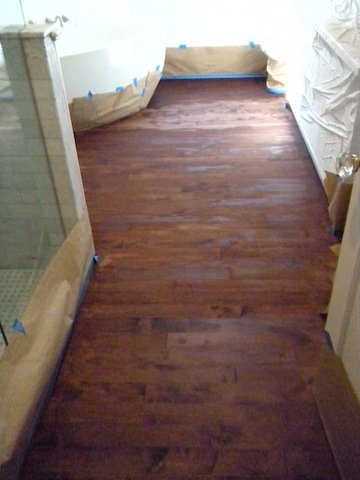
We applied our first coat of dye, using a rag-on application. The dye on this project was a 1 to 1 mix of denatured alcohol and water. We used Transtint dye - dark walnut. You can see with just one coat, the maple has gotten quite dark. Although, this is still light for our finish color.
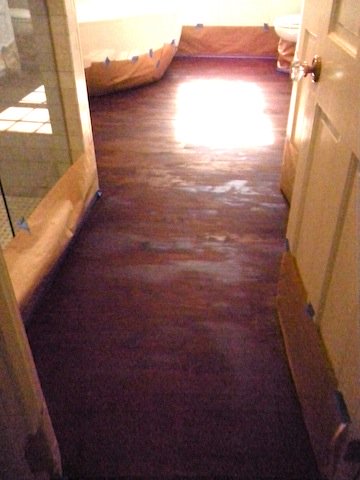
A second coat of wood dye was applied to our hardwood floor. You can see the color get more dense. The second coat was applied once the floor was dried to touch.
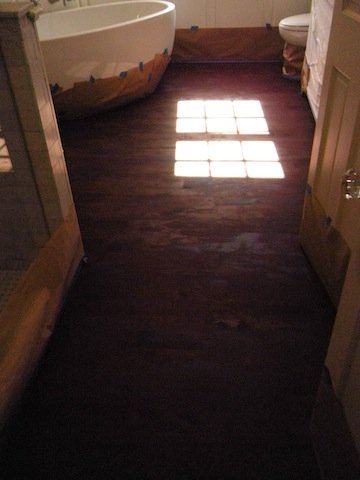
As you can see here, after a 3rd coat of wood dye, the color is very dark and dense. It's also, late in the afternoon, the sun has changed angles. The room looks a little too dark. The image did not have enough natural lighting.
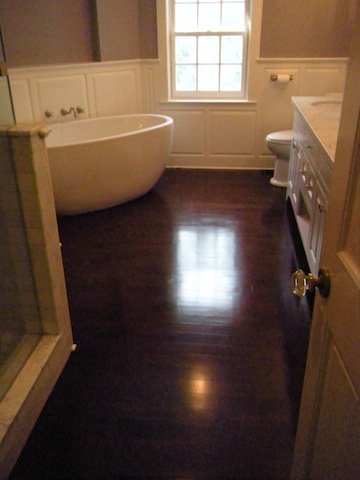
Once the dye was dried for a good 24 hours. We applied three coats of oil base polyurethane for a top coat. All masking paper and tape was removed. Any dyes that bled through our masking material was cleaned up with water and bleach.
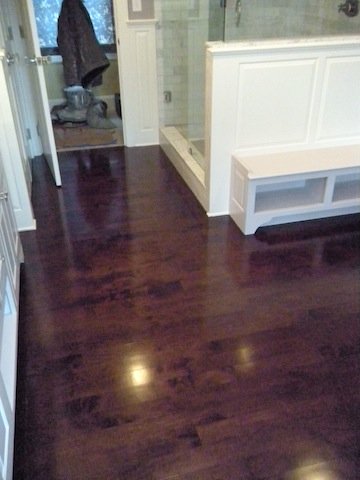
From another angle, the wood dye appears lighter. Don't be fooled, there's recess lighting bouncing right off the hardwood floor.
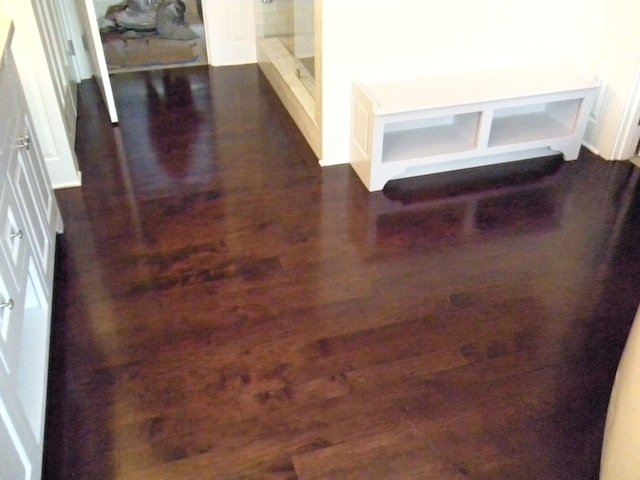
On our Maple hardwood, the dark walnut color of the wood dye, really brings out the character of the wood.
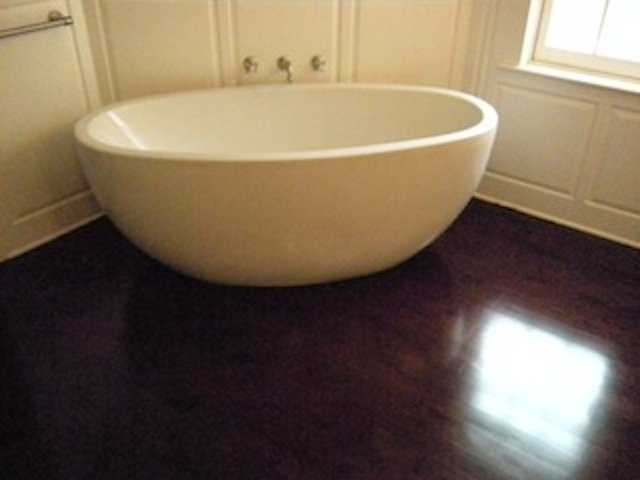
A Modern Finish for a Transitional Interior Design. This bathroom was remodeled by The Chelsea Company.
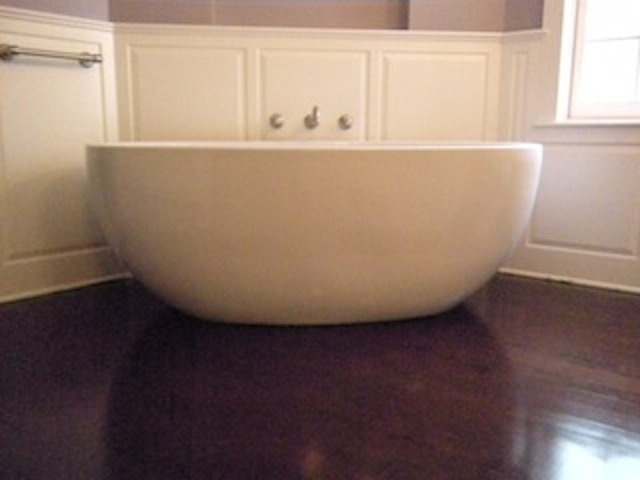
You can achieve many effects with aniline dye. Aniline dyes has many uses as a colorant. You can use as a base color, mix it for a custom color, layer it oil base stains, hard wax oils. The possibilities are endless. Pick up some dyes and experiment with colors.
Aniline wood dye stain gallery
See dense colors of aniline dye stain and stain layering
Aniline dye stain images and photos
Aniline floor dye
Stain Layering with aniline dye
Conclusion
Dyes have many uses but can be tricky to work with. With some knowledge, you can widen your stain application skills. The possibilities are endless for a unique custom color design. So, go pick up some dyes and start playing around with samples. You will be surprised with what you can do with it.
Choose an ideal company
You have done all the research and now have the knowledge. Don't choose the wrong flooring company.
Why work with average, when you can work with an ideal hardwood flooring company? Avoid opting for sub-par products, poor workmanship, the lack of industry knowledge and training for the sake of something new.
With G & S Floors, you will experience optimum personal service, with superlative, effective premium quality workmanship in the industry and high quality products. Homes are one of the biggest and most important investments and should be cared by an ideal company.
We've been in business over 19 years. We are a NWFA flooring contractor and follow industry standards and best practice for hardwood flooring installation, sand and finishing. We have access to training and ongoing professional development. We have a well trained staff and we never stop learning. We have a powerful network of talented professionals, distributors, manufactures and experts.
Invest in "Quality" for better service and hardwood flooring that can last a lifetime or centuries!

